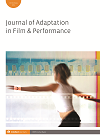
Full text loading...

Henry James’s The Ambassadors is considered by many James scholars his most complex novel and his central character, Lambert Strether, a man whose decisions are not always easy to explain to either the reading audience or the other characters in the text. Adapting this work to other media formats presented challenges that, this article argues, were not fully met. One of the major problems faced by the two television versions and one theatrical version of this work is their failure to address what James calls a ‘virtuous attachment’, a term understood by Strether to define the relationship between young New Englander Chad Newsome and his French ‘companion’, Madame de Vionnet. This article examines this issue as well as the particular demands that television and stage adaptations of literary works must address and that these ambitious and distinctive approaches to The Ambassadors faced, including adapting the work into a big Broadway musical.

Article metrics loading...

Full text loading...
References


Publication Date:
https://doi.org/10.1386/jafp_00101_1 Published content will be available immediately after check-out or when it is released in case of a pre-order. Please make sure to be logged in to see all available purchase options.